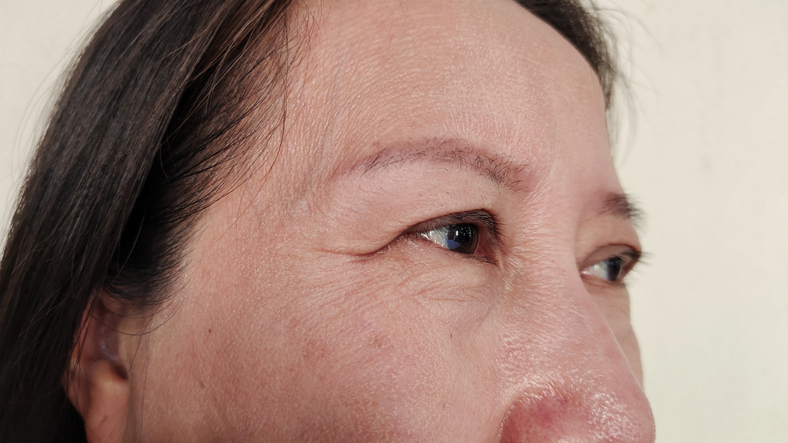Ptosis is a condition that affects the appearance and function of the upper eyelids. It can be congenital or traumatic in origin and is often treated with blepharoplasty. If you are neglecting to have your condition looked at by an eyelid surgeon in Orange County, you should be aware of how ptosis impacts eye health as you age. Its effects can cause a range of issues, from eyelid asymmetry to damaged vision. Seek proper ptosis treatment and consult with the experts at the office of Dr. Jeffrey M. Joseph.
What Is Ptosis?
Ptosis is a disease that can develop for a number of different reasons. Some people are born with ptosis and develop symptoms regardless of their lifestyle, while others might develop it due to their environment. But what exactly is ptosis, and where does it come from?
“Droopy Eyelids”
Ptosis is commonly referred to as droopy eyelids or simply a drooping lid. It is named for its most recognizable trait. Over time, the muscles and skin that make up your upper eyelid weaken and start to sag. This sagging can be a slow, gradual process for some, whereas others notice that their eyelids droop quickly and severely. If left untreated, these drooping lids can sit so low that it becomes impossible for you to open your eyes all the way.
Types of Ptosis
Most forms of ptosis are acquired over time. Aging is the most common risk factor for ptosis, as cells naturally deteriorate as you age. The levator muscles, which are the small muscles responsible for opening and closing your eyelids, tend to get damaged or weary over the years.
Another form of ptosis is congenital ptosis. As discussed, this less common form of eyelid drooping happens to people who are born with this developmental condition.
How Ptosis Affects Your Body
Most people notice the symptoms of ptosis right away. Usually, one eyelid is affected more than the other, leading to an asymmetrical appearance. If you see yourself in the mirror and one eye is drooping lower than the other, you are likely dealing with some form of ptosis.
Ptosis Symptoms
Over time, you will increasingly notice these ptosis symptoms:
- A limited scope of visibility, with upper lids closing in more and more as time goes on
- Impaired vision on both sides of the face
- Soreness, irritation, and pain around the eyes
- Consistent tearing up without a way to slow it down
- Having to lift your head to see more clearly
- Constant eye rubbing
If these symptoms appear to be getting worse quickly, you should set up an appointment with our specialists as soon as possible. Ptosis is a progressive condition that will only become more exaggerated the longer you hold off getting help.
Risk Factors and Additional Causes
Additional diseases and developed conditions may also contribute to the rise in ptosis symptoms. For example, those with styes or Horner syndrome may be more likely to develop ptosis over time.
There are other risk factors to be aware of. Ptosis can make other conditions more complicated to treat as it continues to break down weakened muscles and nerves under the skin. You also need to be aware of any physical injury risks. Accidental tearing of a levator muscle or the ripping of skin can have long-term effects on your cosmetic and ocular health.
Trouble Seeing and Reading
The most detrimental health effect that comes from droopy eyelids is the significant hindrance it puts on your vision. With eyelids drooping below the iris, it is impossible to see anything blocked by this excess skin. If you can no longer drive, read, work, or even watch TV without struggling to see, you need help right away. Ptosis should not develop to the point that it is causing such a significant disruption in your daily life.
Getting Treated for Ptosis
The best way to reduce your ptosis symptoms and prevent drooping lids is through customized upper lid blepharoplasty. During your consultation, the surgeon will determine what caused your ptosis and what damage it is doing to your body. After assessing other factors, such as your eye health and your overall medical history, your surgeon will prescribe treatment.
Upper blepharoplasty is an outpatient procedure that can be done in a day and offers incredible, long-lasting results. After a few weeks of easy recovery, there are plenty of physical and aesthetic benefits to enjoy. Learn more about this procedure by contacting Dr. Jeffrey Joseph today.
